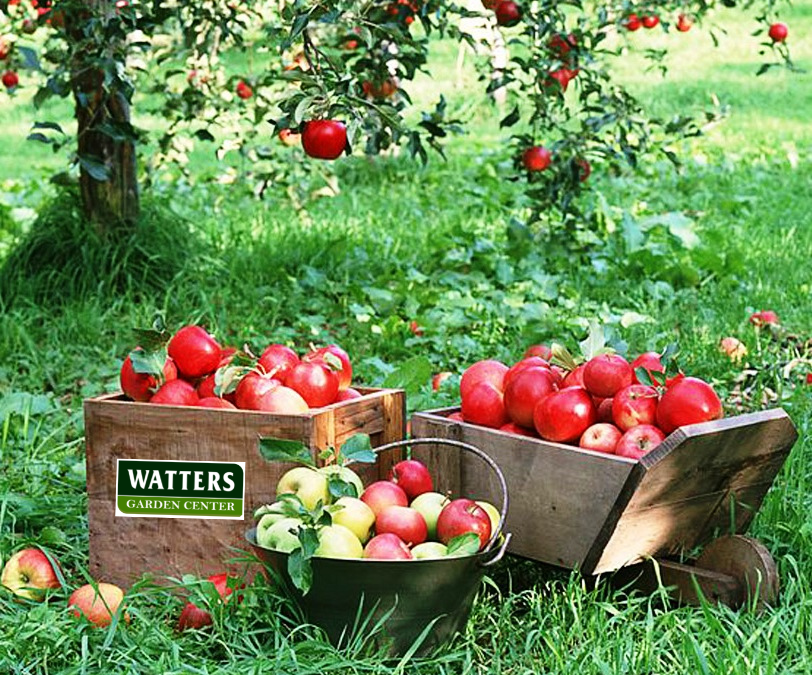Tips to plan for getting the most out of your crops
By Lisa Watters-Lain, Arizona’s garden gal
In the past, a person needed a lot of land to grow fruit trees. Things have changed. Dwarf and semi-dwarf fruit trees have made it possible to grow crops in just about any yard. Most standard-sized fruit trees mature at a height and width of between 18 and 25 feet, requiring a big chunk of space and also proving difficult to prune and spray without using a ladder.
Still, even with smaller trees, growing fruit is a long-term investment. Trees can take anywhere from two to 10 years to bear fruit. If you plan to be harvesting for years to come, it pays to do some upfront planning.
Choosing a Size
The terms dwarf and semi-dwarf can be confusing. Dwarf fruit trees reach a height and width of about eight to 10 feet. At this height, they can be tended and harvested without a ladder. Pruning keeps them even smaller. Unfortunately, dwarf fruit trees tend to be short-lived.
Semi-dwarf fruit trees are a little larger, with most topping at 12 to 16 feet tall and wide. Maintenance and harvest require a ladder, but the average yield is eight to 12 bushels, about twice what you expect from a dwarf tree. And, semi-dwarf fruit trees live longer.
There is not much difference in space requirements between the two types of trees, and both should start producing fruits within five years. With just a bit more work, the yields are far greater on semi-dwarf trees. With actual dwarf trees, you will have all your fruit within arm’s reach.
For those of you thinking that even eight to 10 feet is more space than you have or can sacrifice, don’t give up. Fruit trees can be grown in containers as well. The yield is not as heavy, but every bit as delicious.
Determining Whether Your Trees Need Pollinators
Most fruit trees produce better fruits if two or more trees are planted nearby. Just don’t put your house or barn between the two trees. Anywhere in the landscape will do.
Although the trees need to be the same type of fruit, they should not be the same variety. You can plant two different kinds of apples, and they will cross-pollinate with each other as long as they bloom simultaneously. Most fruit tree catalogs and plant labels give you suggestions for excellent pollinators. We have several local charts here at Watters Garden Center that will help.
If you only want one tree, your best options are peach, apricot, nectarine, and sour cherry. These are self-pollinating or self-fruitful and pollinate themselves with help from bees. One notable exception is Stella Sweet Cherry, which is also self-fruitful.
A second option is a multi-grafted tree, where three or more varieties of fruit are grafted onto one trunk. Another name for this fruit tree is a “Fruit Cocktail Tree.”
Determining Whether Your Trees Need a Longer Chilling Period
Fruit trees need a certain number of hours when the temperature drops below 45 degrees Fahrenheit. Without this chilling period during their dormancy, they set little fruit the following spring. We have locally proven varieties available here at the garden center.
Deciding How Much Maintenance to Plan On
All fruit trees require some care and the right Fruit Tree Food. Most require annual pruning. However, some can get by with minimal supervision once established. At the top of the list of low-maintenance trees are cherries. These require pruning only when branches are damaged or crossed.
Stone fruits like peaches, apricots, plums, and nectarines are also easy to maintain. Some pruning is required to keep the trees open to light and may need fruit thinning in early summer for a larger harvest.
Apples and pears are the best mountain producers. The fact that apples and pears are the last fruit trees to blossom in spring reduces the likelihood of frost damage. This one trait puts them in the number one producer spot.
Pruning fruit trees is a vast topic and varies with the tree type. But starting with the right tree for your location and getting it off to a healthy start is a solid first step toward your first fruit harvest.
If you’re thinking fruit this spring, now is the time to plant. Plant before they leaf. Late winter and early spring are the ideal planting window for fruit trees. Watters has the most extensive local selection and is ready to set fruit and grow.
Until the next issue, I’ll be helping gardeners plant the perfect fruit tree here at Watters Garden Center.
Lisa Watters-Lain can be found throughout the week at Watters Garden Center, 1815 Iron Springs Rd. in Prescott, or contacted through her website at WattersGardenCenter.com or Top10FruitTrees.com.

